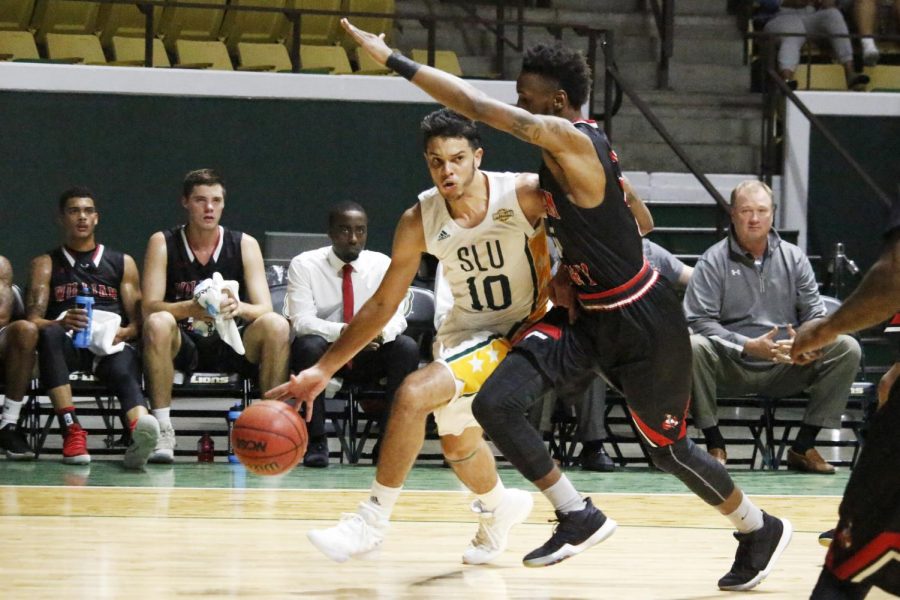The physical price of playing sports
File Photo
Basketball ranked as the most dangerous sport in terms of injuries with 533,509 injuries per year. Basketball and several other sports can take a physical toll on athletes.
September 17, 2018
A common problem in sports is injuries and the physical toll it takes on others. Because of this, many chose not to participate in sports and other recreational activities.
Every sport has its own direct impact on injuries and its various types of injuries. From a broad perspective, each sport tends to have a small cluster common injuries but a large number of those injuries.
Non-contact sports injuries tend to deal with the muscles and ligaments more than the actual bone. According to George McGovern, a sports medicine teacher at Destrehan High School, basketball is the most injury prone non-contact sport. The top injuries relate to the knee including anterior cruciate ligament, medial collateral ligament, posterior cruciate ligament and lateral collateral ligament injuries.
McGovern discussed reasons for such injuries.
“These occur because of the nature of always jumping and running up and down the basketball court,” said McGovern.
On the contrary, contact sport injuries have the most bone and head injuries. According to GreatSchools, football is the most dangerous contact sport, and traumatic brain injuries, TBI, are the biggest resulting injuries in all of sports. The most common type of TBI is a concussion.
According to McGovern, such injuries can be dangerous even if they do not affect walking or bodily movements. He explained why concussions are such serious injuries.
“Broken ribs, dislocated shoulders and fractured fingers can all be treated and healed over a small timeline of several months or less,” said McGovern. “Concussions are so scary because they can impact you years after being diagnosed. Schools and teams simply can’t afford the technology to have the proper equipment to see the long-term effects on concussion.”
In “Youth Football Participation on the Decline,” Andrew Cooper, staff writer for The Pioneer, showed that high school football participation has decreased by 3.5 percent over the past 5 years due to concussions.
Schools and teams try to prevent injuries that occur during games, performances and matches by working out in weight rooms and practicing the proper nutrition. Another technique is pregame stretching. According to McGovern, injuries spike by 70 percent when teams do not stretch before their games and matches. Stretching gets the muscles, joints and tendons ready for in game performance by “waking them up.”
Stretching, proper nutrition and adequate workouts are all important to control injury, but the most important of all is hydration. When athletes play a sport, they sweat and lose water quickly. To prevent dehydration, players regularly drink water, Gatorade or Pedialyte, all of which replenish the proper carbohydrates to prevent dehydration. Another technique used to prevent injury is wearing the proper protection equipment. Every sport has a unique type of protection equipment, but they all share similar functions.
According to the article “20 Sports that cause the most injuries” by Shawn Selby, baseball is ranked as the 7th sport with the most injuries with 143,784 injuries per year and those aged 15-24 making up about 26.8 percent of those injured. Soccer makes it in at number five with 229,088 injuries per year and those aged 15-24 making up 37 percent of those injuries. The top three most dangerous sports are football at number three with 420,581 injuries per year and those aged 15-24 making up 39.5 percent of those injuries, bicycling at number two with 521,578 injuries and those aged 15-24 making up 18.3 percent of those injuries, and basketball at number one with 533,509 injuries per year with those aged 15-24 making up 47.8 percent of those injured.











ANN HAMANN • Sep 19, 2018 at 2:18 pm
EXCELLENT !!very consise and informative.this is one young man that has a future in Journalism.